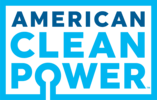American Clean Power Association (ACP) - American Clean Power Association (ACP)
Wind Industry Profile of
Newsarchive - American Clean Power Association (ACP) 4
American Clean Power Association Launches
02/09/2021
AWEA Releases 2021 Clean Energy Road Map
11/18/2020
Report recap: Four highlights from AWEA’s Wind Powers America Third Quarter Market Report
11/03/2020
New report: Wind and solar remain the country’s most affordable sources of new electricity
10/22/2020
Wind Powers America Annual Report
04/20/2020
Voters Strongly Favor Offshore Wind Energy
04/14/2020

